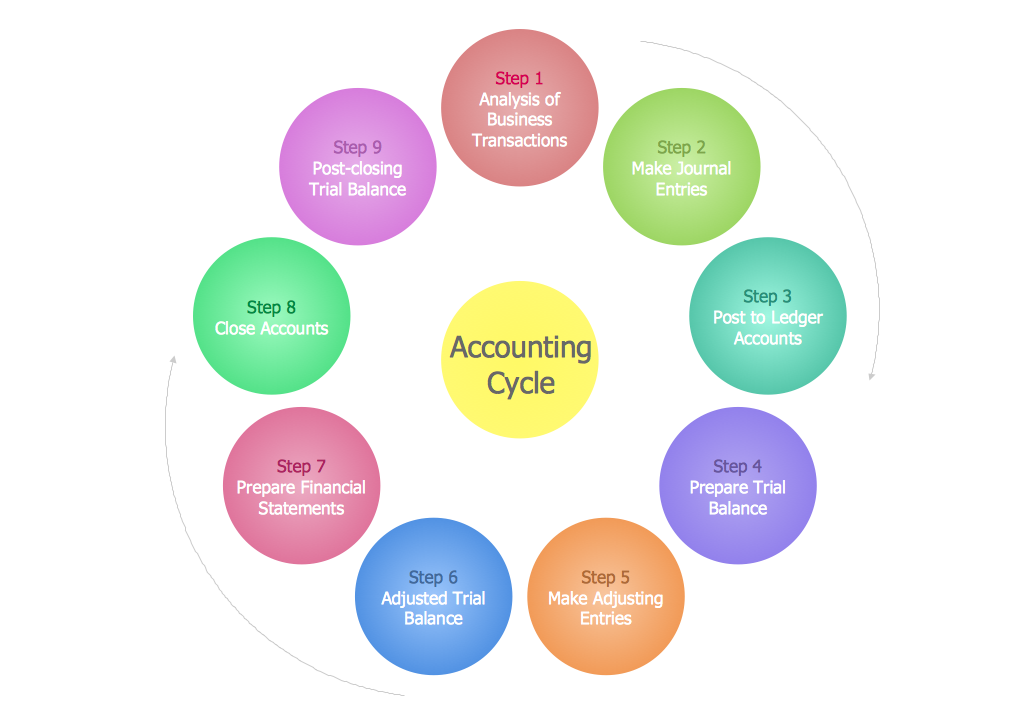
This financial process demonstrates the purpose of financial accounting–to create useful financial information in the form of general-purpose financial statements. The accounting process consists of activities involved in preparing financial statements and includes identifying, recording, and summarizing a business’s financial transactions. The accounting cycle is the series of steps required to complete the accounting process.
- This new trial balance is called an adjusted trial balance, and one of its purposes is to prove that all of your ledger’s credits and debits balance after all adjustments.
- A trial balance is an accounting document that shows the closing balances of all general ledger accounts.
- After determining the accounts involved, the next step is to journalize the transaction in a journal book.
- In short, an accounting cycle makes sure that all of the money passing through your business is actually “accounted” for.
- She is a highly motivated and detail-oriented individual with a passion for learning.
Making Adjusting Entries
All public companies that do business in the U.S. are required to file registration statements, periodic reports, and other forms to the U.S. Therefore, their accounting cycles are tied to reporting requirement dates. As a small business owner, it’s essential to have a clear picture of your company’s financial health.
Calculate the Adjusted Trial Balance
When a transaction is recorded, it has to be posted to an account on the general ledger. Accounts have to do with business operations, as well as where money is moving. The general ledger allows bookkeepers to monitor a company’s financial position. General ledger accounts are often referenced on financial statements. what is the weighted average contribution margin in break One of the most common to be referenced is the cash account, which tells a business how much cash is available at any time. The next step of the accounting cycle is to organize the various accounts by preparing two important financial statements, namely, the income statement and the balance sheet.
Are bookkeeping and accounting different?
Calculating these balances is crucial, as they are used for testing and analysis. There are several different amounts of time that a company may choose to report on. Some have a monthly accounting period, while others only report on an annual basis.

Then, the next day, a new accounting period begins, and new books are opened. The accounting cycle is a circular process, and as long as a company is in business it will be active. There are two options; single-entry accounting and double-entry accounting. Single-entry accounting is simple and goes hand-in-hand with cash-basis accounting. It only records a single entry for each transaction, like a chequebook.
Step 3: Post Transactions to the General Ledger
This process is repeated for all revenue and expense ledger accounts. Balance sheet accounts (such as bank accounts, credit cards, etc.) do not need closing entries as their balances carry over. The accounting cycle is a multi-step process designed to convert all of your company’s raw financial information into financial statements. After closing, the accounting cycle starts over again from the beginning with a new reporting period. Closing is usually a good time to file paperwork, plan for the next reporting period, and review a calendar of future events and tasks. The first step in the accounting cycle is identifying transactions.
All popular accounting apps are designed for double-entry accounting and automatically create credit and debit entries. You need to identify all transactions that occur throughout the fiscal year. The best approach to do that is to create a system where every transaction is automatically captured because that prevents human error. Typically, companies integrate their accounting software with their payment processor and point-of-sale (POS) software to capture revenue. Disorganized books can lead to bad decisions, failure to fulfill various obligations and sometimes even legal problems.
Most companies today use accounting software for improved accuracy and faster accounting. While you’ll need to invest some money upfront in purchasing and implementing accounting software, the long-term benefits significantly outweigh the costs. The general ledger (GL) is a master record of all transactions categorized into specific categories such as cost of goods sold (COGS), accounts payable, accounts receivable, cash, and more. For organizations seeking to optimize their financial closing processes, HighRadius’s Financial Close Management is an indispensable tool.
A shorter internal accounting cycle can make bookkeeping more manageable, especially when the company’s finances are complicated. However, businesses with internal accounting cycles also follow the external accounting cycle of the fiscal year. Accounting is made up of all of the ways that a business’s money moves. It documents every transaction, making sure that things are accurate and kept track of. Without accounting, most businesses would be in poor financial health. Use of a checklist with deadlines in the accounting cycle improves accountability and process management.


Comment (0)